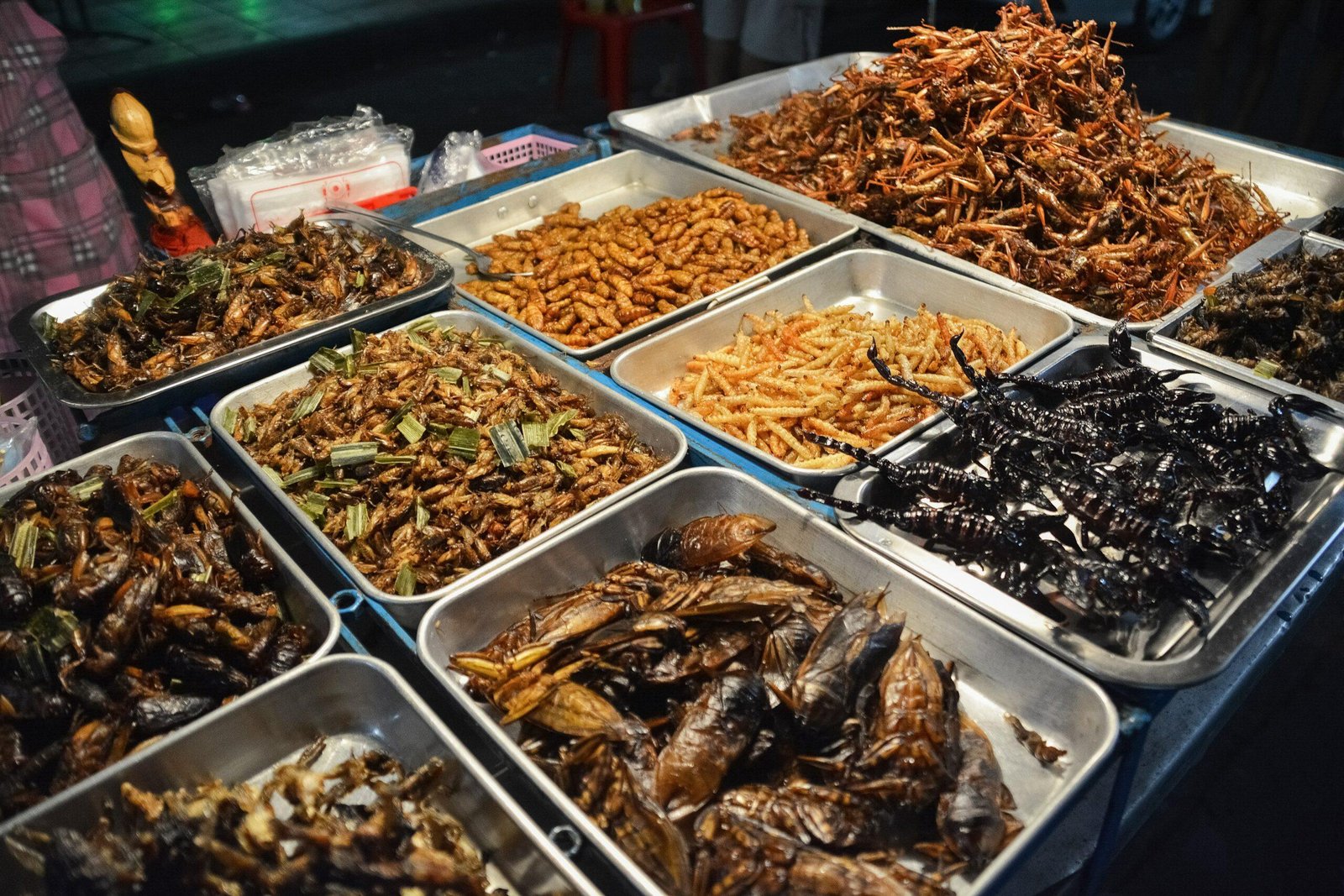No products in the cart.
Explore how edible insects are shaping Lao cuisine through culinary innovation, sustainability, and global food trends.

In Laos, edible insects have long been part of traditional diets, enjoyed as crunchy snacks or protein-rich side dishes. From crickets fried with lemongrass to silkworm pupae stir-fried with herbs, insects are deeply tied to local food culture. But today, edible insects are moving beyond tradition into culinary innovation. Chefs, entrepreneurs, and researchers are reimagining insects as ingredients for modern dishes, protein powders, and sustainable snacks. This trend not only preserves cultural heritage but also positions Laos at the forefront of global sustainable food movements.
Why Edible Insects Matter for the Future of Food
Nutritional Value: High in protein, vitamins, and minerals.
Eco-Friendly: Requires less water, land, and feed than livestock.
Cultural Heritage: Honors Lao food traditions and rural practices.
Economic Potential: Expanding markets for insect-based products.
Global Relevance: Aligns with UN calls for alternative protein sources.
Forms of Culinary Innovation in Laos
Gourmet Dishes: Fusion restaurants serving insect-based appetizers.
Snack Foods: Packaged cricket chips and protein bars for urban youth.
Health Supplements: Insect protein powders marketed for fitness.
Tourist Experiences: Cooking classes teaching visitors about insect cuisine.
Export Opportunities: Niche global markets for sustainable protein.
Challenges to Acceptance
Urban youth increasingly preferring Western fast food.
Stigma among international tourists unfamiliar with insect cuisine.
Lack of standardized farming and safety regulations.
Limited infrastructure for large-scale insect farming.
Example in Laos
In Vientiane, a startup produces cricket flour for protein bars, marketed to athletes and eco-conscious consumers. The brand has gained traction both locally and regionally.
Conclusion
Edible insects in Laos are more than a traditional food—they are becoming a symbol of innovation, sustainability, and global culinary relevance. By investing in this trend, Laos can lead the movement toward future-ready diets.
About CITS Laos
CITS Laos collaborates with chefs, startups, and researchers to promote insect-based cuisine. We create bilingual food platforms, run culinary innovation campaigns, and design SEO strategies to highlight Lao insect cuisine worldwide. By blending tradition with innovation, CITS Laos ensures Lao food culture thrives in the global future of food.